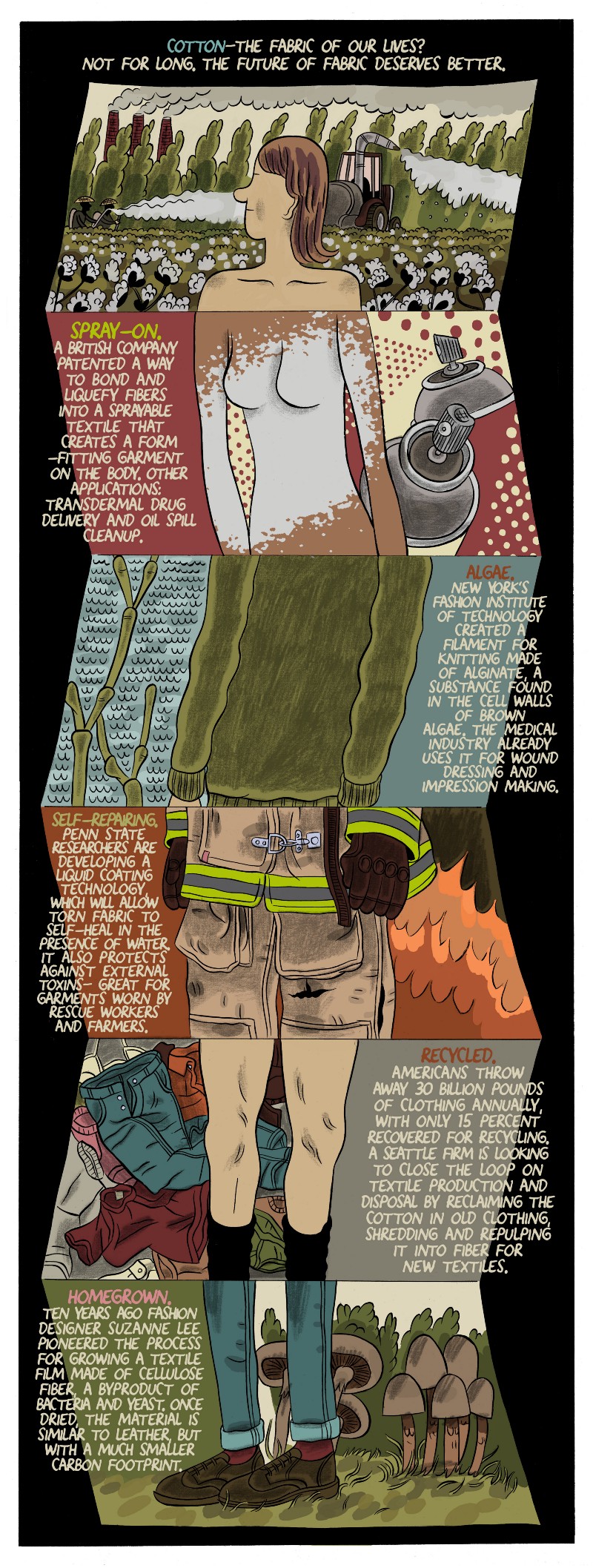
It’s been over 25 years since Cotton Incorporated launched its Fabric of Our Lives campaign on Thanksgiving Day in 1989–the sweet voice of Aaron Neville in our ears as he crooned: “The touch, the feel of cotton, the fabric of our lives.” As clothing consumers, cotton is near and dear to our hearts. It’s soft; it’s marketed well; it’s been around forever. But maybe the future of fabric deserves better.
Although we’re unsure of the exact trajectory of the plant’s history, we do know that cotton was independently cultivated in both the Americas and Afro-Eurasia as far back as 4500 B.C. Like any valuable import or export, its production has played an important role in the politics of the world’s most dominant powers. This close association to the financial underpinning of the British Empire and then the United States irrevocably tied the plant–and the invention of the cotton gin for its mass production–to the crime of slavery and exploitation.
In recent history, the rapid globalization of industry and economy has seen the plant’s reputation further tainted as the methods used for its production have made it into one of the more pesticide-heavy and environmentally damaging crops we harvest.
So, if cotton is out, what do the fabrics of the future look like?

For more information about these new fabric types, read more: spray-on, algae, self-repairing, recycled, and homegrown.


How We Get To Next was a magazine that explored the future of science, technology, and culture from 2014 to 2019. This article is part of our Sartorial section, which looks at the impact of science and technology on how we present ourselves to each other. Click the logo to read more.
